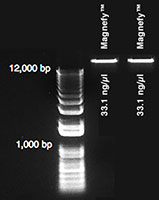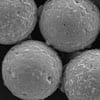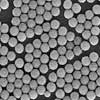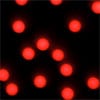Superparamagnetic particles have been utilized extensively in diagnostic and other research applications for the capture of biomolecules and cells. They confer a number of benefits, including ease of separation and suitability for automation. Magnetic particle-based diagnostic assays demand the highest performance in terms of physical handling, ligand binding characteristics, and signal-to-noise ratios. Bead composition directly impacts settling and magnetic separation profiles, which have implications for assay parameters such as incubation times for binding and elution steps, buffer changes, etc. Most importantly, the composition impacts specific / nonspecific binding characteristics, and background signal arising from the particle itself. These factors have a direct impact on the sensitivity and dynamic range of the assay.
Our comprehensive magnetic particle offerings allow us to address the unique requirements of specific assay systems, with options for particle diameter, morphology, surface properties, separation profile, and other characteristics. No other company offers such a complete collection for your screening and development efforts. We synthesize at scales that will carry you from R&D through manufacturing, and under an ISO 13485 Quality System that will meet your regulatory needs. We invite you to contact us directly to discuss your next development project.
Watch our video of a sample magnetic particle separation or see also LS001 Magnetic Separator Flux Density Chart.






